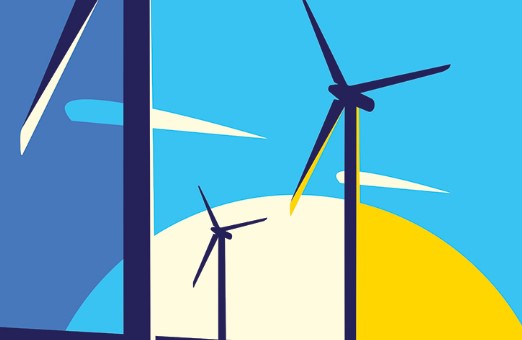The Role of Carbon-Free Electricity in Promoting Sustainable Energy Practices

A pillar of the worldwide endeavour towards environmentally friendly energy sources is carbon-free electricity. With an eye on the significance of energy attribute certificates and the wider effects on the energy sector, this paper investigates how carbon-free power supports sustainability.
Defining Carbon-Free Electricity
Carbon-free power is that produced without releasing other greenhouse gases or carbon dioxide (CO2) into the atmosphere. Nuclear power, solar, wind, hydropower, and other renewable energy sources are the main suppliers of this kind of electricity. Reducing the environmental effects connected with the combustion of fossil fuels and slowing down climate change depend on the transformation to carbon-free electricity.
Read also: Revitalize Your Routine: The Incredible Health Perks of Matcha Tea
Importance of Renewable Energy Sources
Carbon-free electricity mostly consists on renewable energy sources. Key elements in the shift to sustainable energy are wind, solar, and hydroelectric power since they create electricity without generating CO2 emissions. Along with helping to lower greenhouse gas emissions, these renewable energy sources offer a varied and strong supply. Achieving long-term sustainability and energy security depends on funding renewable energy infrastructure.
Energy Attribute Certificates: Ensuring Transparency
Promoting carbon-free electricity depends much on Energy Attribute Certificates (EACs). Market-based tools, EACs verify the creation of one megawatt-hour (MWh) of renewable energy sources. They give a means of monitoring and confirming the renewable source of power. Energy companies can show their dedication to sustainability by releasing and selling EACs, therefore guiding consumers on their energy consumption.
Empowering Consumers with EACs
EACs let customers to actively support renewable energy, therefore empowering them. Customers who buy EACs are essentially making sure that the carbon-free power generation matches their use. This method not only stimulates demand for renewable energy but also motivates energy generators to raise their capacity. EACs build an open and responsible market where customers actively help to promote sustainability.
Enhancing Energy Efficiency
Promoting carbon-free electricity depends critically on improving energy efficiency as well. The efficiency of energy systems can be much raised by using cutting-edge technology and techniques including demand-side management, smart grids, energy-efficient appliances, and demand-side management. Maximising the advantages of carbon-free power depends on lowering energy waste and maximising energy utilisation. Furthermore helping to minimise expenses and minimise the total environmental impact of energy usage is increased energy efficiency.
Public Awareness and Education
Wide-ranging acceptance of carbon-free electricity depends on public knowledge and education. By teaching customers about the advantages of energy efficiency and renewable energy sources, behaviour can be changed and support of sustainable energy methods raised. By means of campaigns, seminars, and media outreach, stakeholders can enlighten the public on the need of switching to carbon-free electricity and ways in which each person can support this endeavour. Achieving long-term environmental goals calls for a society of sustainability.
The Role of Policy and Regulation
Promoting carbon-free electricity mostly depends on efficient policy and control. Setting targets, offering incentives, and building a legal framework that promotes the growth of renewable energy sources help governments to significantly influence their outcome. Feed-in tariffs, tax incentives, and renewable portfolio requirements are among the policies meant to boost investment in renewable energy and hasten the switch to carbon-free electricity. Overcoming market constraints and guaranteeing a consistent and predictable environment for renewable energy investments depend on strong regulatory support.
Overcoming Challenges and Future Prospects
Promoting carbon-free electricity CFE presents difficulties notwithstanding the great advantages. These cover strong initial expenses, technological constraints, and the necessity of a strong infrastructure. Still, supporting legislation, innovation, and constant study are working to solve these problems. With technological developments and public and governmental support driving expansion in the renewable energy sector, the future possibilities for carbon-free electricity seem bright.
Conclusion
Promoting renewable energy sources and slowing down global warming depend on carbon-free electricity. By means of energy attribute certificates and renewable energy sources, carbon-free electricity promotes openness, responsibility, and customer empowerment. Important elements of this change are improving public knowledge and energy efficiency. Effective policies and laws help to overcome the difficulties related to carbon-free electricity therefore opening the path for a sustainable and environmentally friendly energy future.





